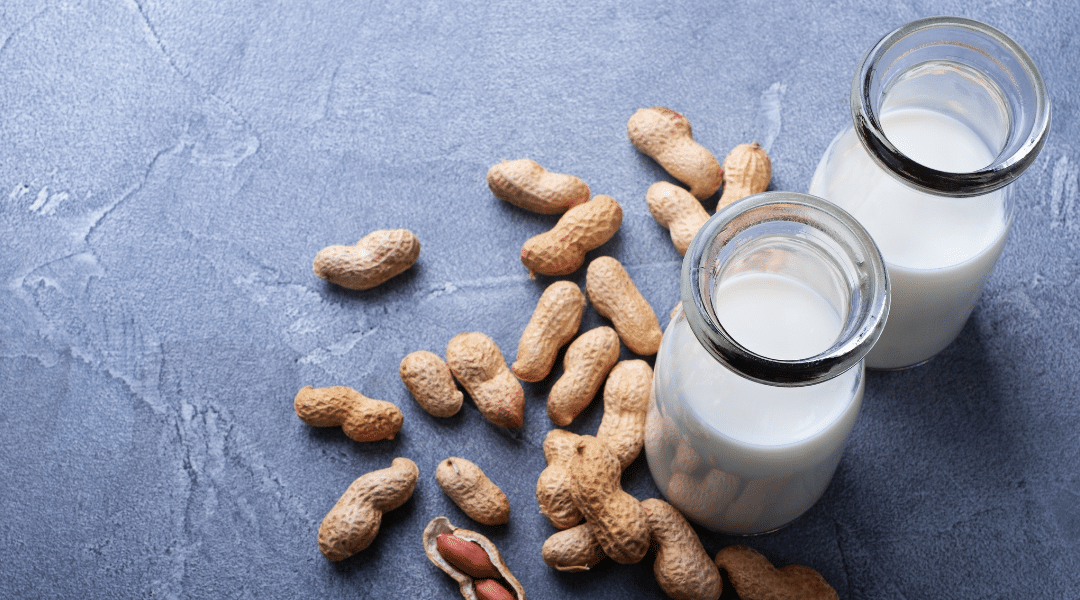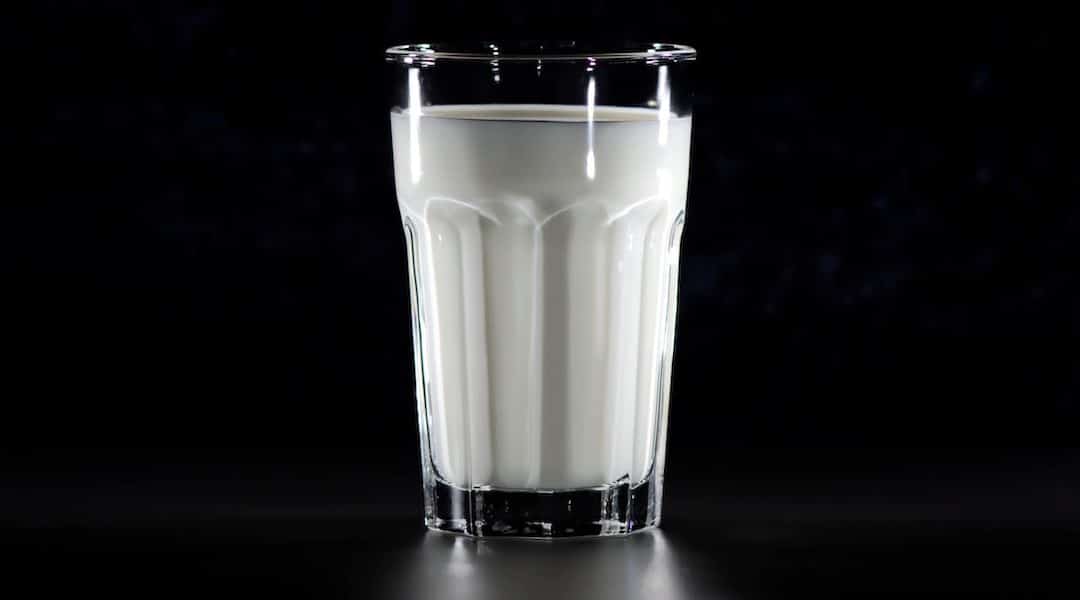Cows’ milk and other dairy products are linked to a wide range of health problems and diseases—many starting at an early age. While dairy is promoted as being natural, wholesome, and healthy—it is none of these things. Children do not need milk to grow into healthy adults. In fact, consuming dairy early in life (and later on, for that matter) could severely impact a child’s immediate and long-term health.
The saturated fat, animal protein, cholesterol, hormones, and growth factors milk contains are linked to a wide range of illnesses and disease including heart disease, certain cancers, acne, asthma, eczema, colic, Crohn’s disease, diabetes, dementia, ear infection, food poisoning, gallstones, migraine, osteoporosis, overweight and obesity…the list goes on.
Aggressive marketing of the supposed virtues of milk-drinking—which ignores entirely a plethora of cautionary science—naturally results in confusion; people don’t know who to believe. It begs the question as to why a product with such profound health implications for adults and children should be so eulogized and promoted, including by governments.
Dairy and Diabetes
Global incidence of childhood-onset, insulin-dependent diabetes (type 1) has been rising by three to four percent a year for decades. In Finland, incidence is five times higher than 60 years ago. At the same time, the age of children affected is dropping. (2) Type 1 diabetes is caused by a genetic disposition coupled to an environmental trigger—without the trigger, the condition may not develop.
Our genes have not changed, so why the remorseless increase? There may be a number of reasons, but scientists say the early exposure to cows’ milk protein can trigger this disease in genetically susceptible children. (3) This may explain why exclusive breastfeeding in early infancy reduces a child’s risk for developing type 1 diabetes, even in those with a genetic predisposition to the disease.
Dairy Allergy
Cows’ milk allergy affects two to six percent of children, with the highest proportion occurring during the first year of life. (4) Symptoms vary and can include an itchy rash, swelling of the lips and face, stomach ache, vomiting, diarrhea or constipation, a runny or blocked nose, and eczema.
Eczema (atopic dermatitis) affects up to 20 percent of children. Triggers can include soaps, detergents, stress, and even the weather. It can run in families and often occurs alongside allergies—food allergies alone affect a third of those with atopic eczema. Peanuts, eggs, and cows’ milk are the most common culprits; therefore, cow’s milk allergy should be seriously considered when treating for eczema. (5)
Cows’ milk can increase the risk of iron deficiency in infants, partly because it contains virtually no iron while at the same time containing potent inhibitors of iron absorption—a double whammy. Cow’s milk also causes gastrointestinal blood loss in many infants, a condition that affects about 40 percent of otherwise healthy infants. (6) This ‘occult intestinal bleeding’ is low-level but persistent and is hard to diagnose as the blood is excreted in the child’s stools.
The only reliable treatment for cows’ milk allergy is to avoid all dairy products including milk, cheese, butter, yogurt, cream, and ice cream. It is important to check for hidden milk ingredients on food labels in the forms of casein, caseinates, milk powder, milk solids, and whey.
Lactose Intolerance
Lactose intolerance is not to be confused with cows’ milk allergy. An individual is considered lactose intolerant when the body can’t digest lactose—the sugar in milk. Sixty-five percent of the world’s population is lactose intolerant. It can cause a range of symptoms including gas, diarrhea, bloat, cramps, and nausea. Children are as susceptible as adults, and it can be developed over time.
Acne
Dairy products also increase the risk of teenage acne, which can cause physical scarring and emotional distress. A Harvard study looking at the high school diets of almost 50,000 nurses found that those who ate the most dairy were more likely to have suffered from acne. The link was strongest for skimmed milk, suggesting that it is the hormones in milk that may be responsible rather than the fat. (7)
Otitis Media
Otitis media, or “glue ear,” affects about 90 percent of children under the age of two. In severe cases, it is the most frequent cause of hearing loss in childhood and some reports link it to food allergies. In one study, 78 percent of 104 children aged 1.5-9 years with this condition also had food allergies and 38 percent of those were allergic to cow’s milk. Eliminating the offending food helped 86 percent and reintroducing it provoked recurrence in 94 percent. (7)
Dairy and Bone Health
For decades, the unique selling point for dairy has been that it is essential for good bone health, reinforced with relentless and expensive advertising campaigns and promotions—many aimed at children. There is a huge gulf between the claims and the reality which is acknowledged by the World Health Organization. The science is clear—the incidence of bone fractures is highest in the countries that consume the most animal milk. (9) The excessive claims that dairy is essential for children (and adults for that matter) are unsupported by the science.
There are, of course, many excellent plant-based sources of calcium including dried figs, kale, sesame seeds and tahini, tempeh, wholewheat bread, baked beans, butternut squash, almonds, Brazil nuts, spring greens, and watercress. Tofu (made with calcium sulfate) is a good source as are plant milks fortified with calcium. The claim that plants provide sufficient calcium is evidenced by the majority of the world’s population—including children—who avoid dairy yet tend to suffer less from bone fractures and osteoporosis.
Vitamin D may be just as important for bone health as it helps us to absorb calcium. Vitamin D is obtained from the reaction that happens when our skin is exposed to sunlight. Some people will need to eat vitamin D fortified foods or take a supplement all year in order to get enough (regardless of diet) but for children, who tend to spend more time outside than adults, it should not be a problem in summer.
Additional Research
Like all other mammals on the planet, most people in the world don’t drink milk beyond weaning and no other animal drinks milk taken from a different species. (1) In modern dairy production, cows are both pregnant and milking for seven months of every year which results in their milk containing high levels of hormones and growth factors, including estrogen. This cannot be good for children or adults.
Viva! Health’s White Lies report reviews the findings of over 400 scientific papers looking at the health effects of cow’s milk and dairy products. Read the evidence for more on the effects of dairy consumption and health.
- Storhaug CL et al. 2017. Country, regional, and global estimates for lactose malabsorption in adults: a systematic review and meta-analysis. Lancet Gastroenterology and Hepatology. 2 (10) 738-746.
- Tuomilehto J. 2013. The emerging global epidemic of type 1 diabetes. Current Diabetes Reports. 13 (6) 795-804.
- Chia JSJ, et al. 2017. A1 beta-casein milk protein and other environmental pre-disposing factors for type 1 diabetes. Nutrition and Diabetes. 7 (5) e274.
- Caffarelli C. 2010. Cow’s milk protein allergy in children: a practical guide. Italian Journal of Pediatrics. 36, 5.
- Leung DYM et al. 2019. The nonlesional skin surface distinguishes atopic dermatitis with food allergy as a unique endotype. Science Translational Medicine. 11 (480).
- Ziegler EE. 2011. Consumption of cow’s milk as a cause of iron deficiency in infants and toddlers. Nutrition Reviews. 69 Suppl 1:S37-42.
- Adebamowo CA et al. 2005. High school dietary dairy intake and teenage acne. Journal of the American Academy of Dermatology. 52 (2) 207-214.
- Zernotti ME et al. 2017. Otitis media with effusion and atopy: is there a causal relationship? World Allergy Organization Journal. 10 (1) 37.
- Kanis JA et al. 2012. A systematic review of hip fracture incidence and probability of fracture worldwide. Osteoporosis International. 23 (9) 2239-56.
This article was written by Dr. Justine Butler, Senior Health Researcher & Writer at Viva! Health. Viva! Health is a part of the vegan charity Viva!. We monitor scientific research linking diet to health and provide accurate information on which you can make informed choices about the food you eat.








